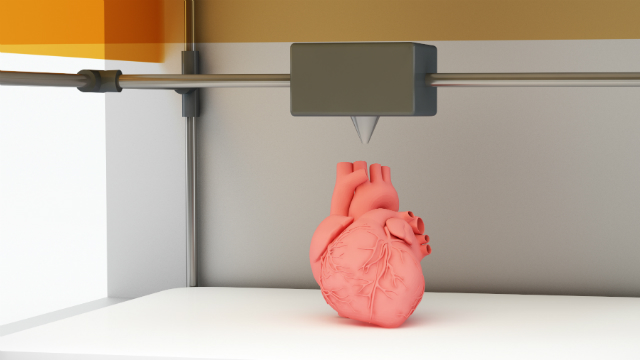3D printing isn’t just for making unique stuffed animals or weird fake meat. It allows us to fabricate objects we never could with traditional manufacturing. Here are some of the incredible things we can print now, which were nearly impossible to make before.
Personalised Car Parts
3D printing can make car parts that are custom-built for the driver’s body and comfort: an ergonomic steering wheel, for example. Last month, Fortune reported Ford’s partnership with California-based 3D printing company Carbon3D. The automakers themselves can benefit from 3D printed parts, too. Instead of the ol’ Ford assembly line, engineers can make manufacturing and design more iterative with 3D printed materials, since prototyping suddenly becomes faster and cheaper and testing becomes more frequent and thorough.
You see, many products — from drinking cups to video game consoles to car parts — are created in a process called “injection moulding.” That’s when a material, like glass or metal or plastic, is poured into a mould that forms the product. But with 3D printing, you can design a crazy object on your computer, and it can be turned into reality.
“3D printing bridges the gap between the digital and the physical world,” says Jonathan Jaglom, CEO of 3D printer manufacturer MakerBot, “and lets you design pretty much anything in digital form and then instantly turn it into a physical object.”

This 3D-printed airbox for a Formula-style racecar improves performance: it increases horsepower by 10% and torque by nearly 12%. Credit: YouTube
Lighter Aeroplanes
There have been lots of materials used to make planes lighter, and thus more fuel efficient and greener. But 3D-printed materials can cut weight by up to 55%, according to Airbus, which announced its involvement with 3D printing last year.
In February, Australian researchers unveiled the first 3D-printed jet engine in the world.
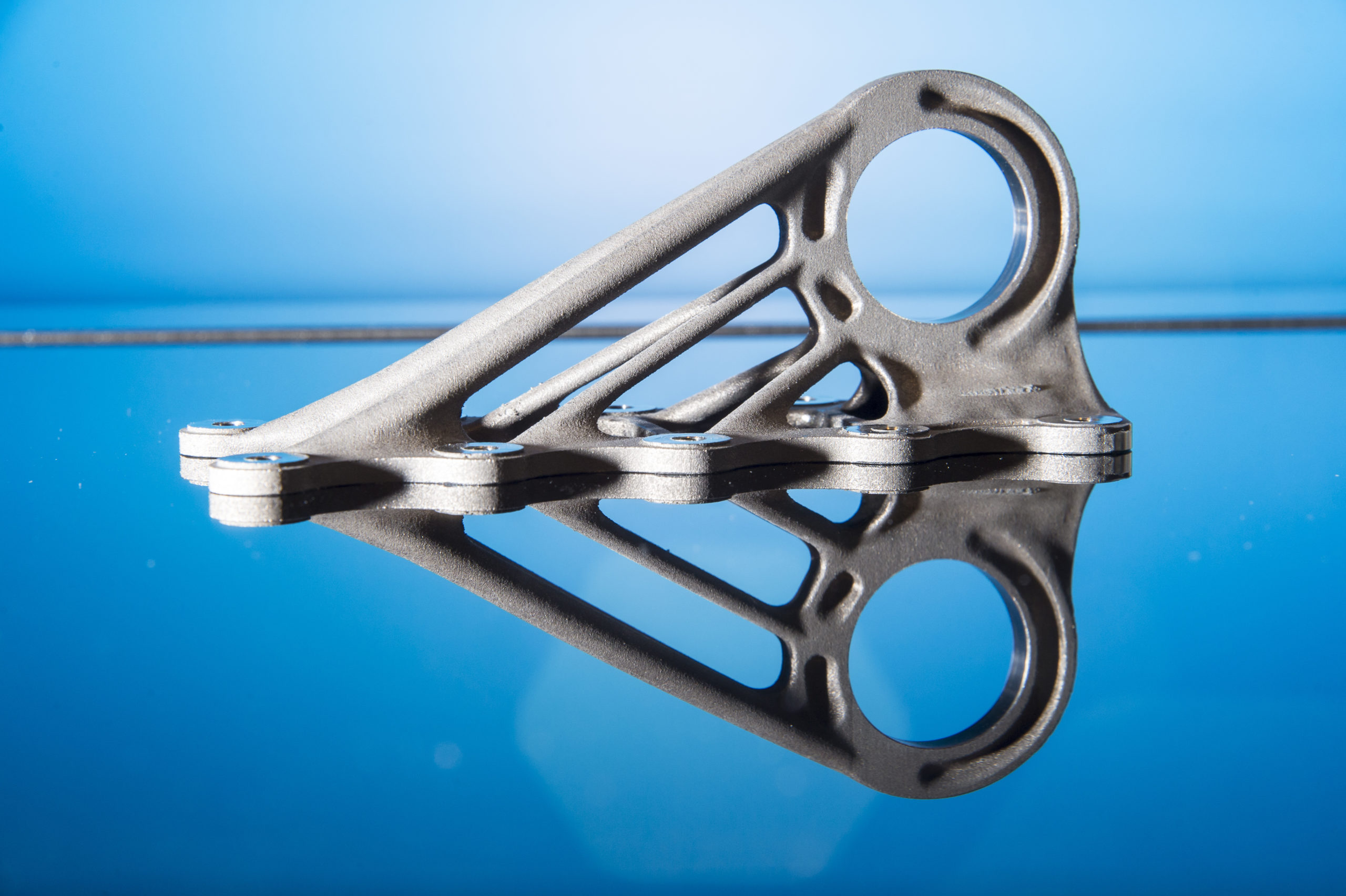
3D-printed structural brackets for planes, like this one for the Airbus A350 XWB jet, make aircraft significantly lighter and more fuel-efficient.
3D-printed polymers often have “high strength to weight ratios,” says Kristine Relja, marketing manager at Carbon3D, the same company that’s working with Ford on the 3D-printed car parts. 3D-printed plane parts use that strength-to-weight ratio to their advantage. It gives them an edge over traditional materials, like the aluminium often found in seat frames.
“If the arm rest of each seat of a plane were replaced with a high strength to weight ratio part, the overall weight of the plane would drop, increasing fuel efficiency and lowering the overall cost of the plane,” Relja says.
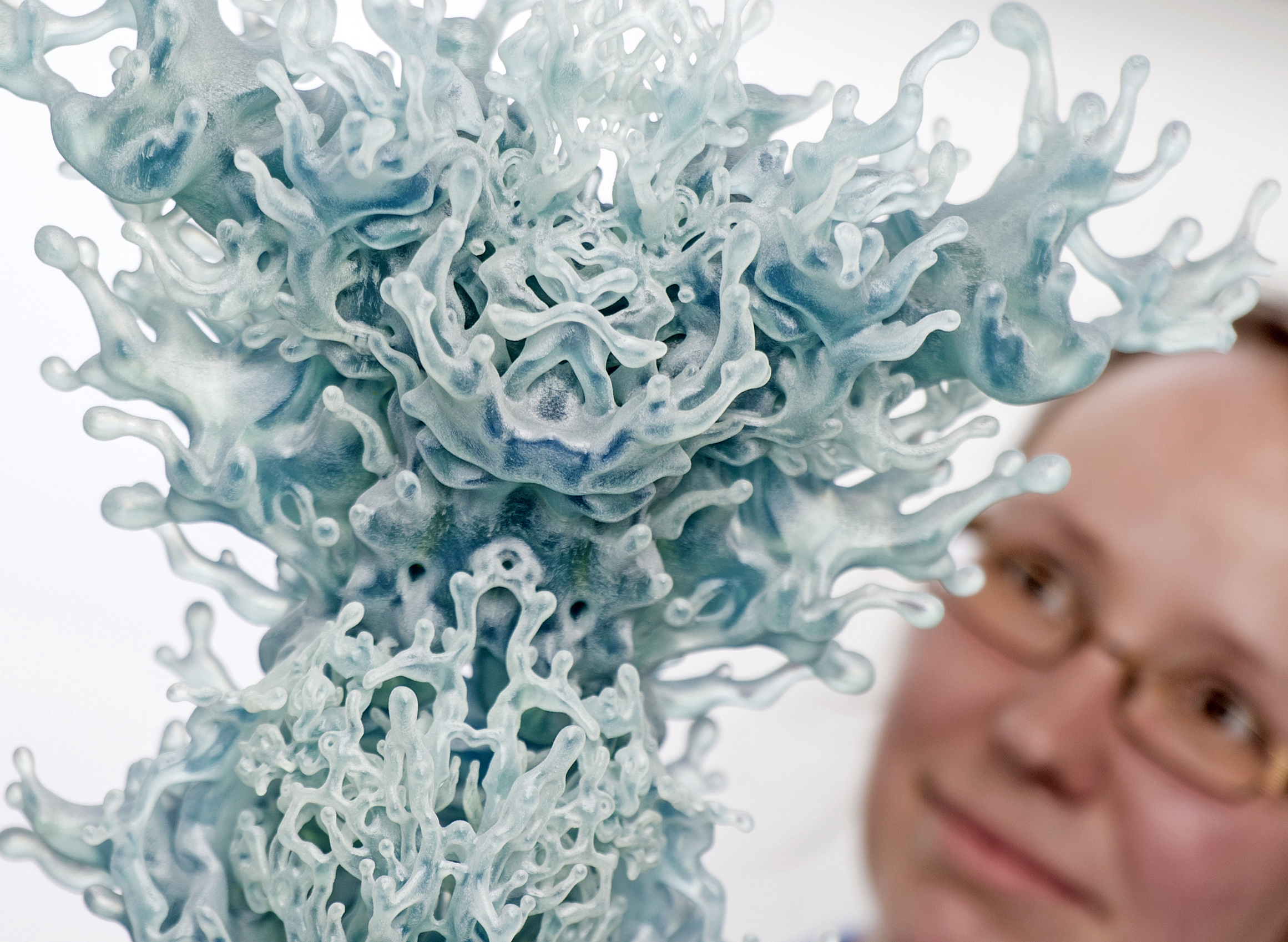
A 3D-printed sculpture by Belgian artist Nick Ervinck. 3D printers excel at churning out extremely unusual, complicated shapes. Credit: AP
Detailed Molds of Your Jaw
Possibly the arena 3D printing handedly dominates is personal health. Our bodies are unbelievably individualized, idiosyncratic flesh bags filled with biological items uniquely shaped to each person. Since customisation is so critical, especially in surgical implants, 3D printing can really shine here.
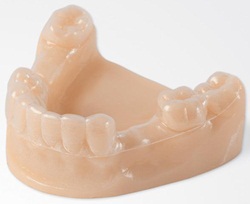
Let’s start with dental trays: Those molds of your chompers that’re made with gross cement stuff that you have to leave in your mouth for minutes on end. They’re useful because they can help dentists and orthodontists create appliances like retainers or braces, and can give them a three dimensional, kinesthetic mould of your mouth.
A 3D-printed dental tray. Image credit: Stratasys
Over at Stratasys, the 3D printing company that owns MakerBot, 3D-printed dental trays are going from CAD file to model, blazing trails in orthodontics. It gives orthodontists and dentists a cheap, accurate glimpse into a patient’s maw. It’s way easier than those nasty physical impressions with the cement, and way less gag-inducing.
Customised Surgical Stents
Stents are those little tubes surgeons stick in the hollow parts of your body — a blood vessel or artery, say — to hold it open and allow it to function properly. Usually, they’re mesh, but stents that are 3D-printed can have an edge, since they’re able to be customised more and are made with cheaper, flexible polymers that can dissolve safely into the bloodstream in a couple years.
At the Children’s Hospital of Michigan in the Detroit Medical Center, a 17-year-old girl was suffering from an aortic aneurysm, a potentially fatal heart condition that was discovered with a precautionary EKG. That’s when Dr. Daisuke Kobayashi and his team turned to 3D printing. A 3D printed model of her heart allowed the doctors to know exactly where to put stents in an otherwise delicate operation for a young patient.
In other cases, the surgical stents themselves are 3D printed: University of Michigan doctors have also implanted 3D-printed stents just above infant boys’ lungs to open their airways help them breathe normally on their own. The advantage of using 3D printing here is that doctors were able to create custom stents that could fit the kids’ individual anatomies, quickly and cheaply.
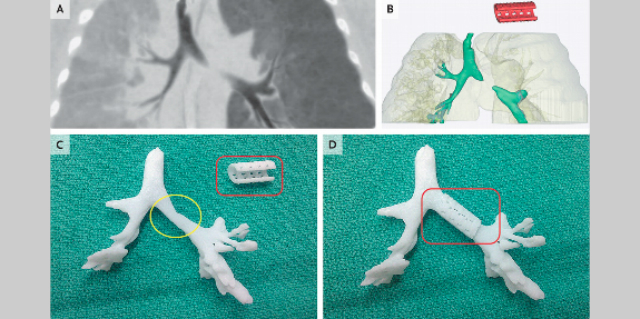
Doctors 3D-printed a patient’s airway along with the stent (outlined in red), to get a tangible idea of how the device fit into his anatomy. Credit: New England Journal of Medicine
Buckyballs
No, not the tiny magnetic choking hazards. We’re talking about models of Buckminsterfullerene, the molecule. It’s every chemistry teacher’s dream. 3D printers can produce tangible, big models of molecules. And they’re accurate, too. This type of complex geometry is really hard to pull off with injection moulding. The closest thing we had before was basically popsicle sticks and Elmer’s.
3D printing not only helps us learn more about what molecules look like by making lifesized models of them — it also helps us make actual molecules. Earlier this year, Dr. Martin Burke at the University of Illinois led the construction of a “molecule-making machine“: It’s a machine that synthesizes small, organic molecules by welding over 200 pre-made “building blocks” and then 3D printing billions of organic compound combinations. This could “revolutionise organic chemistry,” the paper in the journal Science reported, significantly speeding up the process to test new drugs.
What’s cool about 3D printing is that it makes ambitiously designed objects way more feasible. Specifically, 3D printing can make those “complex geometries” that injection moulding can’t: That is, stuff that’s in obscure shapes, like long twisty mobius strips or zillion-sided polygons.
3D printers, like this liquid one from Carbon3D, can copy the complex shapes found in molecules.
Replacement Parts for Your Organs
3D printing can be used to make surgically-implanted hardware that protects or supports damaged organs. This could lead the way to custom repairs for damaged tracheas or windpipes, for instance. Sometimes part of a windpipe needs to be removed, but the two remaining ends need to be joined together — if they can’t be joined together, the patient may die.
3D bioprinting to the rescue! It can replicate the mechanical properties of the trachea. That’s right: a living, biological tracheal replacement can be made from a mix of 3D printing and tissue engineering. That’s what the Feinstein Institute for Medical Research did. They modified a 3D printer to use a syringe filled with living cells that produce collagen and cartilage. Within hours, bioengineered tracheas can be created on-the-spot quickly and cheaply. And that’s a key strength for 3D printing: fast prototypes.
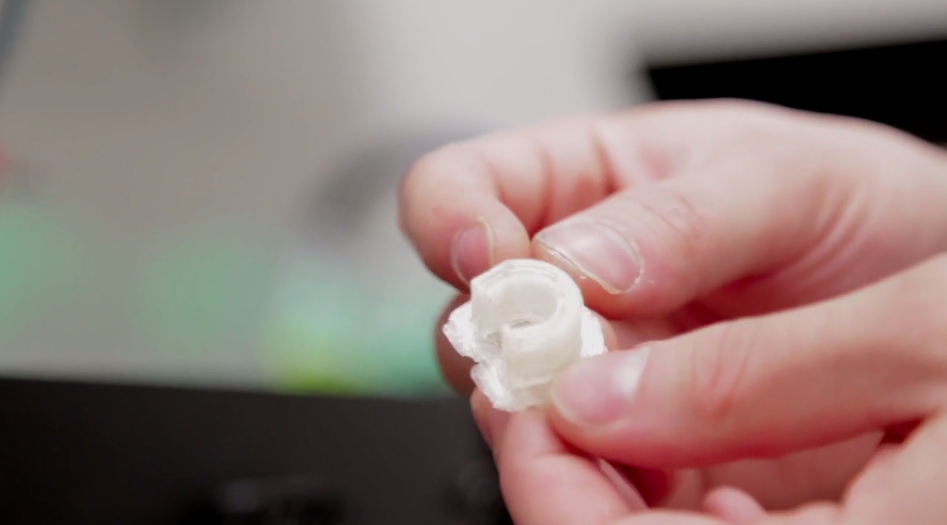
Here’s a 3D-printed tracheal replacement that was created with living materials. Credit: Feinstein Institute
Organs and Bones
The most futuristic use of for these magical printers? They could, one day, create internal organs. That’s a literal lifesaver for folks who need an organ transplant. Also possibly available: eyes, blood vessels, noses, ears, skin, and bones. Even hearts.
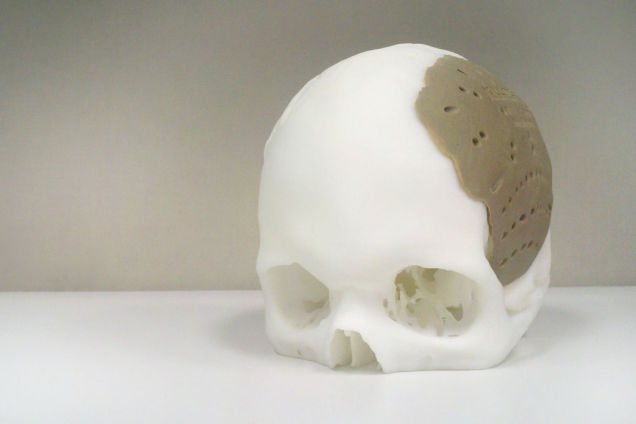
The FDA has approved skull caps that could repair cranial damage — one patient had 75% of his skull repaired using these 3D-printed materials.
And this isn’t just science fiction. In 2013, medical company Organovo started selling 3D-printed liver tissue. It will be a while before a fully functioning liver can be printed, but it’s a big step in the right direction, even if it just means prototypes and experimental liver-like structures.
As if that wasn’t incredible enough, we can also create replicas of people’s existing internal organs. With the help of CT scan data, docs can whip up three dimensional, touchable copies of individuals’ guts, in all their nuanced, unique glory. This can help medical professionals better find tumours or other irregularities. (Not to mention it could possibly take the gross awesomeness out of biology class dissections.)
And already, companies are creating cheap, 3D-printed prosthetic limbs for kids. A whole generation is growing up with 3D printing — not just as a toy, but a vital part of their bodies.
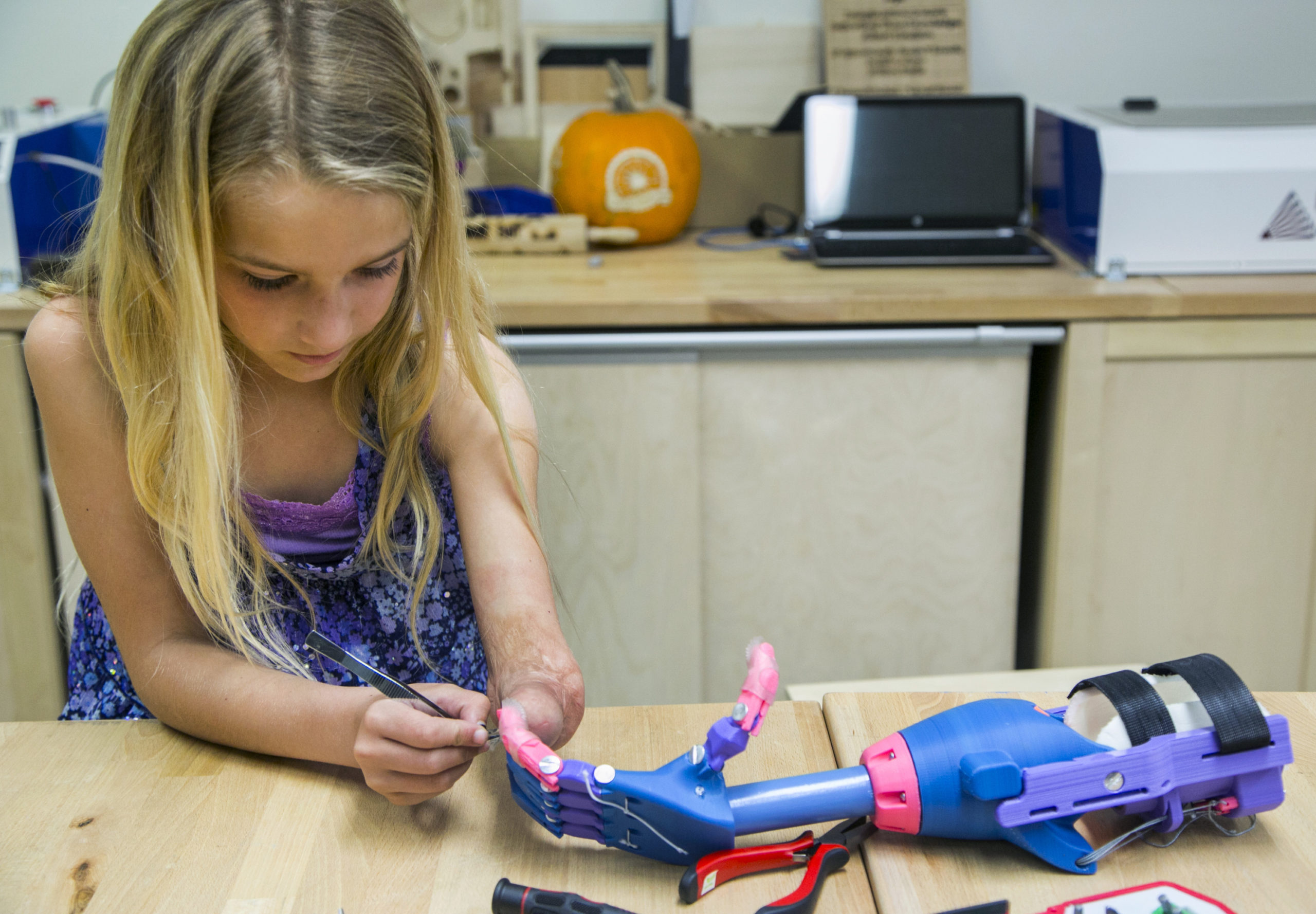
This 7-year-old girl adjusts her new 3D-printed limb. 3D printing is beneficial for prosthetics, especially children’s, since they quickly outgrow expensive traditional ones. But 3D printing presents a fast, cheap alternative. Credit: AP
Top image credit: Shutterstock
